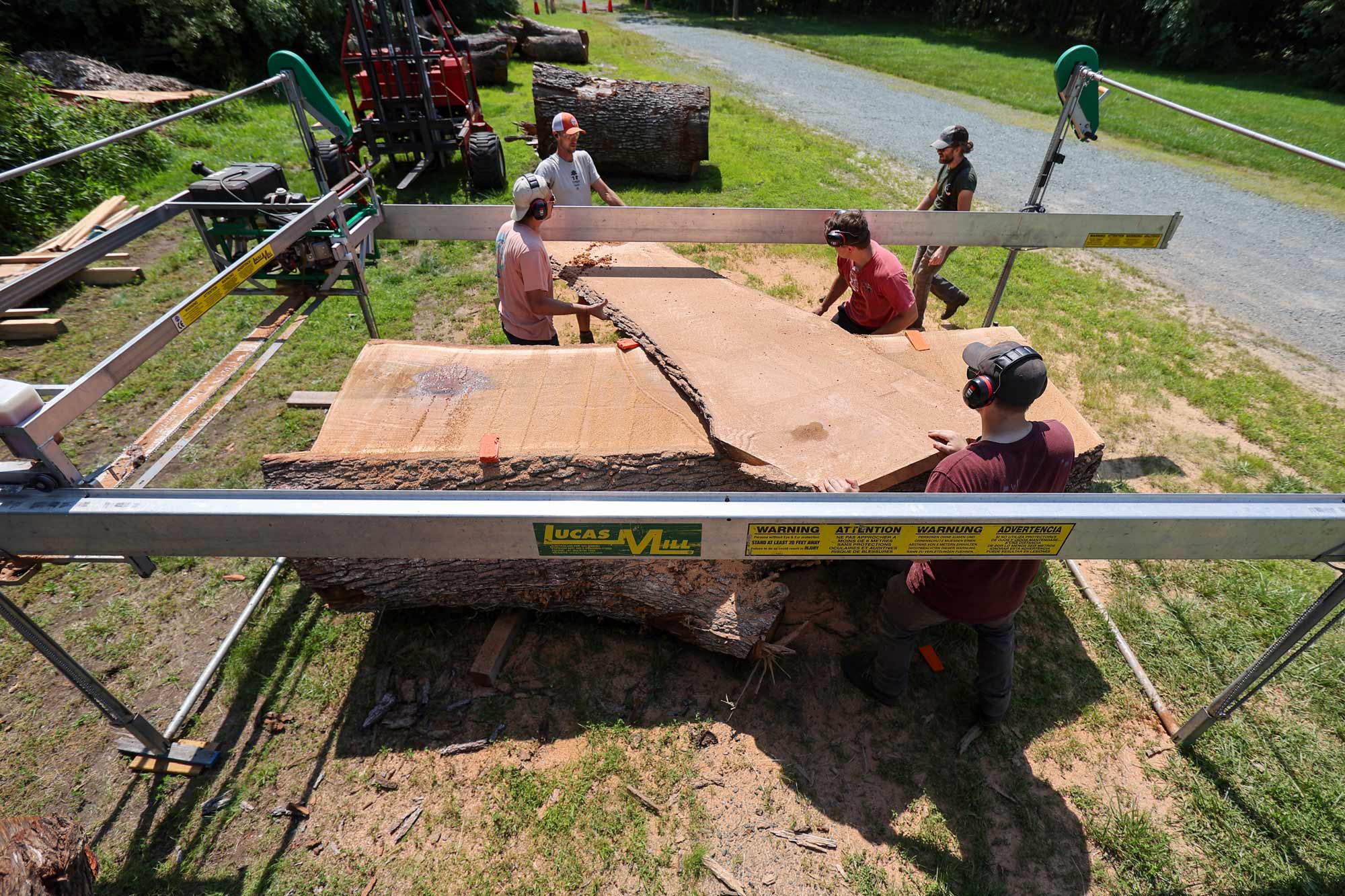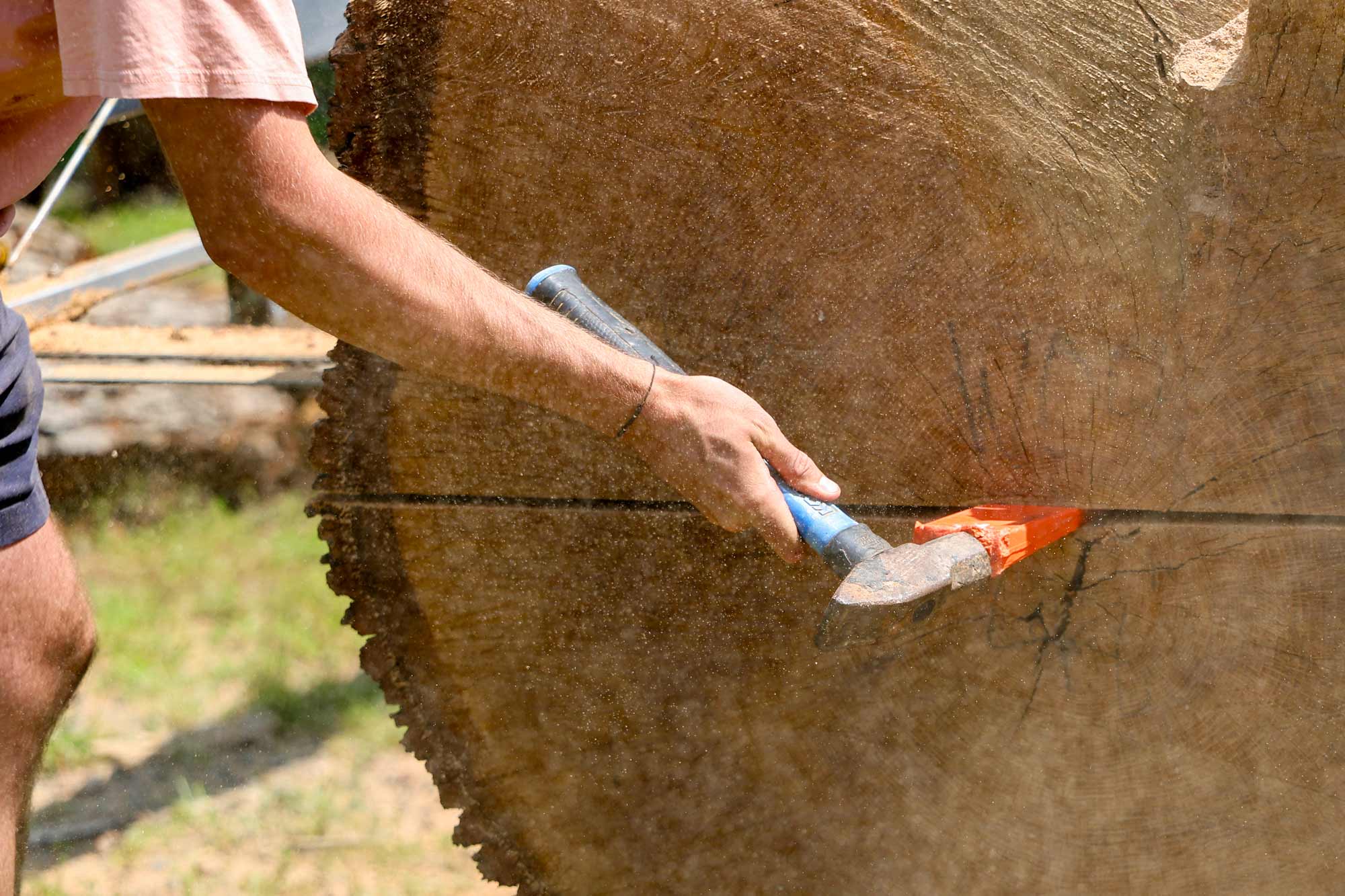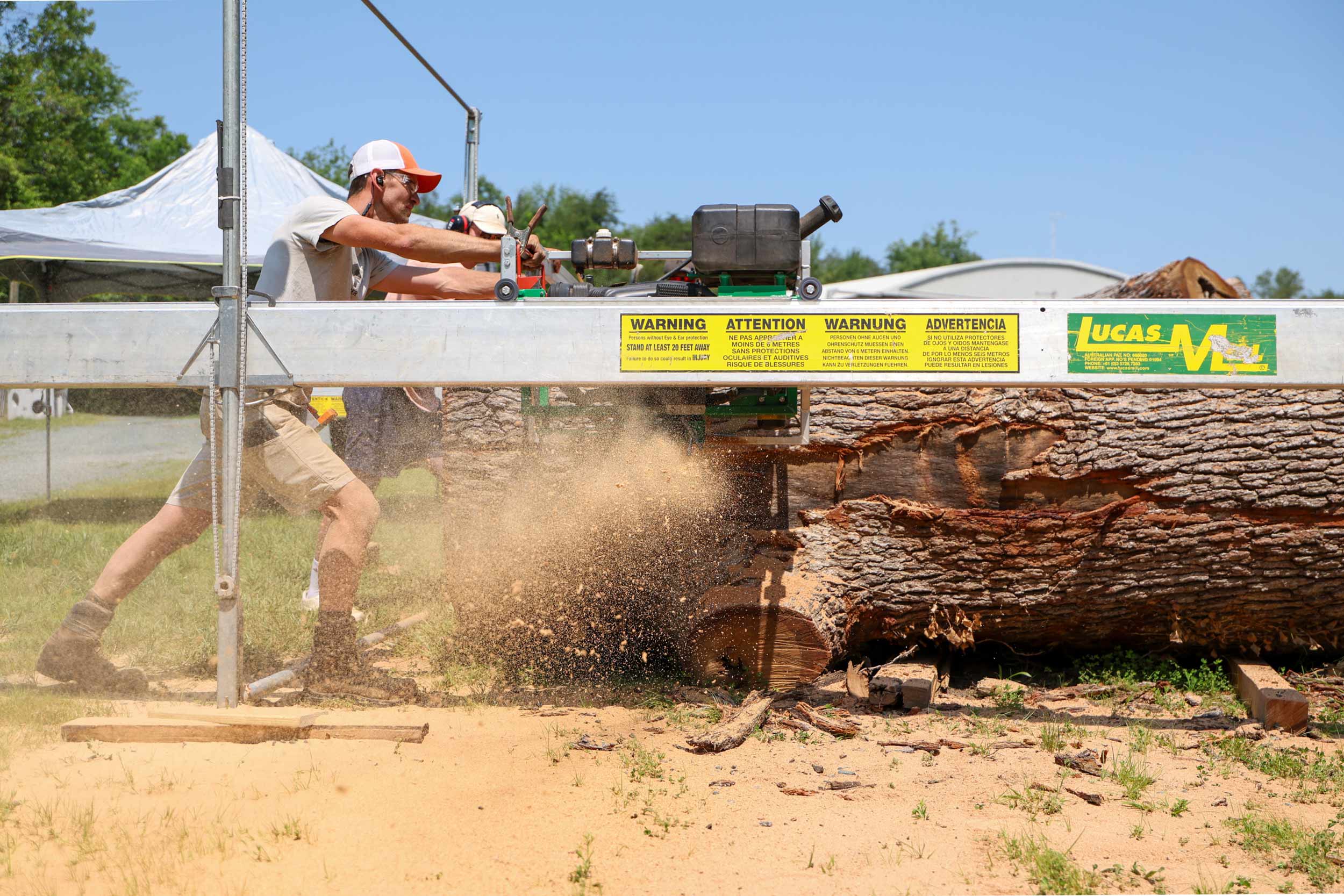Sawdust plumes filled the air as Wade Cotten guided a 72-inch chainsaw bar slowly and steadily through a massive 48-inch-wide, 11-foot-long white oak log, slicing off a 2 1/2-inch slab.
Working for UVA Sawmilling, Cotten, a sawyer, and Pryce Foyt, an architectural undergraduate student at the University of Virginia, pressed the bar into the wood – a process that took about six minutes to span the 11 feet.
Until recently, the tree stood on North Grounds, but was felled with several others to make way for a new parking structure near John Paul Jones Arena. Dump trucks carried the large logs, one at a time, to UVA Sawmilling’s facility at the Milton Airfield east of town. The venture has another yard on Observatory Hill for smaller trees.

UVA Sawmilling workers slide a slab of wood from an 11-foot-long white oak log. (Photo by Matt Riley, University Communications)
“We have 12 heritage logs staged there, many of them quite old,” Andrew Spears, co-founder of UVA Sawmilling, said. “Most are white oak, but we do have an enormous red oak, as well as some Japanese zelkova. A few magnolias, maples and multiple cedars were small enough to go to the usual log yard.”
In 2019, while pursuing a master’s in landscape architecture at UVA, Spears joined with Tim Victorio to repurpose trees felled on Grounds. Their initiative focuses on urban timber, providing wood for projects at the University. It supports itself by selling some of the wood.
Cotten runs the Timber Made Company in Charlottesville. He has been sawmilling for about 10 years. Using a Lucas Mill – an Australian-designed portable sawmill assembled around the large logs – he processed the massive North Grounds logs.

Pryce Foyt hammers a plastic shim wedge into the saw cut while a 14-inch slab is being removed from a white oak log. (Photo by Matt Riley, University Communications)
As they saw the chainsaw bar moved through the wood, Cotten and Foyt hammered in orange plastic wedges to keep the cut – known as the “kerf” – from pinching the chain. UVA graduate architecture students Brandon Meinders and Charlotte Devine monitored the milling process and helped shift the slabs once they were cut. The slabs were stacked on 4- by 4-inch spacers to air-dry before moving them into a solar lumber kiln.
“Trying to kiln dry a white oak timber can be very difficult, so we are letting these pieces take their time and show us how they want to move or check before being crafted into benches,” Spears said. “We did put an end-grain sealer on the logs so that the drying process would be even slower and more controlled, but we will be watching closely.”
The large logs should yield plenty of useful wood, ranging in size from 34 inches to 60 inches in diameter, the longest being 20 feet long.











